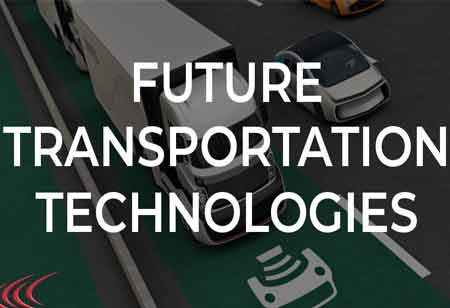THANK YOU FOR SUBSCRIBING
THANK YOU FOR SUBSCRIBING
Be first to read the latest tech news, Industry Leader's Insights, and CIO interviews of medium and large enterprises exclusively from Auto Tech Outlook

By
Auto Tech Outlook | Friday, February 07, 2020
Stay ahead of the industry with exclusive feature stories on the top companies, expert insights and the latest news delivered straight to your inbox. Subscribe today.
How people prefer to commute has changed over the past years, while the transportation sector had to evolve with the changing times, bringing in new advanced methods.
FREMONT, CA: Technological advancements have helped people live a better life and carry out day-to-day activities with less stress. These developments are a result of continual progress and innovations. The transportation industry has witnessed new technological advancements as well. For instance, cars can drive themselves along predetermined routes, trains use new magnetic rail systems, and the hyperloop will move at 800 miles an hour. Global truck production is increasing in thousands every year, according to OICA publications and MarketsandMarkets analysis. The demand for freight and passenger transport will rise due to the increase in the production of trucks.
The transportation industry will witness a trend of an increase in the demand for truck platooning, autonomous driving, electric lorries, smart transportation solutions, and electric/hybrid buses. Improving technology in transportation will improve the air quality by reducing the emission of greenhouse gases, and support economic development.
The Hyperloop, initially conceived by Elon Musk, is well known as it can transport a lot of people to a great distance in a short time. Historically, the development in high-speed rail has been impeded by challenges such as managing friction and air resistance, which becomes critical while approaching high speeds. By employing magnetically levitating trains in evacuated or partly evacuated air, speeds of thousands of miles per hour is achievable. This is also known as the vactrain concept. The Hyperloop resembles a vactrain system but operates at approximately one millibar of pressure.
The transportation sector and citizens have been using GPS for more than a decade, but the technology is very sophisticated compared to ten years ago. In the past, GPS devices could only calculate mileage to the estimated time to reach the final destination. Now, transportation companies use GPS to make adjustments based upon the weather conditions, know traffic conditions of every route to decide the best course for faster deliveries.
High-speed rail networks have taken center stage in the transportation industry. While South Korea is starting to build a maglev train, China is reportedly developing its second one. A planned maglev train can transport many passengers over 200 miles in a mere 40 minutes, which will free up congested roads, reduce accidents, and reduce air pollution. However, the high cost of development is the main issue with maglev trains as with fast speeds; the trains cannot take pit stops and have to be routed directly between destinations.
The transportation industry is attempting to use string theory as a mode of transportation. String theory is an attempt to model four fundamental interactions such as electromagnetism, gravitation, strong nuclear force, and weak nuclear force altogether in a single theory. This concept uses two strings with a wheeled vehicle riding them. It is a form of the new low-cost transport system, and it can run on all terrain, including water, deserts or forests, and towers.
Modern transportation is evolving due to transformative technologies. With increased complexities and population, the transportation industry has to take drastic steps to overcome challenges such as congestion, pollution, and accidents and provide a hassle-free transportation system.
See also: Top Automotive Technology Companies
 Copyright © 2025 AutoTech Outlook. All Rights Reserved | Privacy Policy | Subscribe | Sitemap | About us | Feedback Policy | Editorial Policy
Copyright © 2025 AutoTech Outlook. All Rights Reserved | Privacy Policy | Subscribe | Sitemap | About us | Feedback Policy | Editorial Policy 



